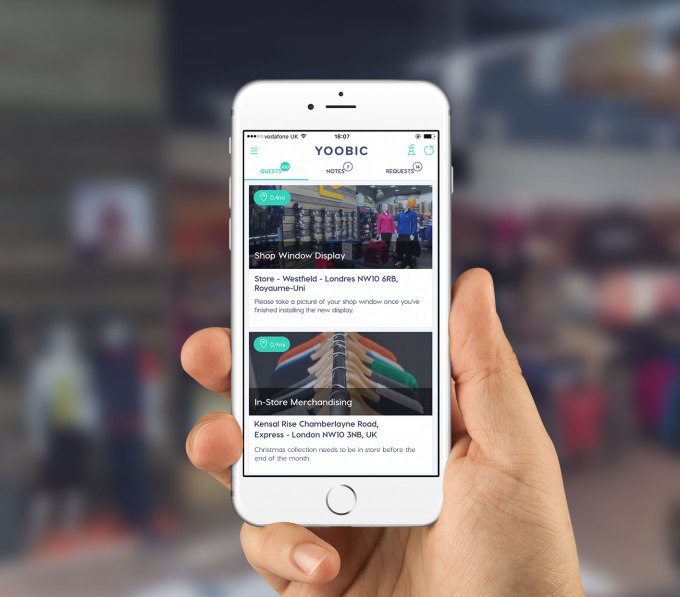The serial entrepreneurs behind Yoobic have kept it all in the family over the course of three startup companies.
The three brothers, Fabrice, Avi, and Gilles Haiat, began their entrepreneurial journey with a maintenance service management business. Over time that evolved into their second and most successful venture, doing building management for smaller buildings, monitoring things like energy usage.
Now they’ve taken that skill for property-related work and applied it to the hundreds of millions of dollars that brands spend on marketing on the store floor. “Retail is detail,” says Fabrice Haiat.
With Yoobic, their latest business, they’re providing consumer-facing brands with an opportunity to monitor how exactly their items get displayed in everything from the corner store to the big-box grocery store.
The company estimates that brands lose roughly EUR20 billion in revenue because of poor execution of in-store marketing campaigns and promotions.
Using Yoobic, brands engage with store managers and corporate marketing teams to monitor the pricing, placement and promotions around their products.
“We believe that brand collaboration demands a new platform,” says Haiat.
The company’s suite of products includes a store database, which collects information on every store’s layout, including size, aisles and endcaps (the display space at the end of an aisle). With that information consumer brands can identify merchandising opportunities and the promotional material they can use in the store.

Once a company gets a sense of the layout and physical opportunities to market products in-store, then they can use the mobile app to ensure in-store merchandising is done correctly.
“We increase net sales for our customers by 25 percent,” said Haiat. “Today we are launching our five-day go-live program.”
Companies design a questionnaire that is distributed via the Yoobic app, along with a barcode scanner and image detection that allow users to capture live images of displays.
“The user in-store receives a notification with the guidelines of what needs to be implemented. In a few seconds, they report back to the headquarters, take pictures, and answer the questionnaire,” said Haiat. “They can chat directly with their regional manager through the chat if they need any kind of support on how to implement the guideline.”
